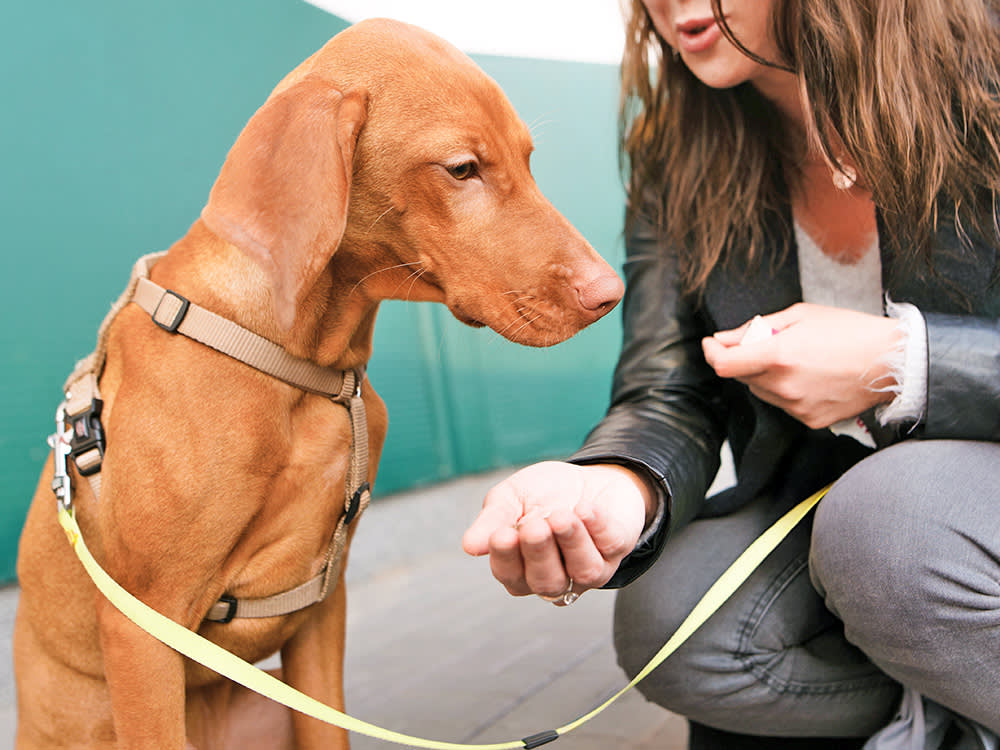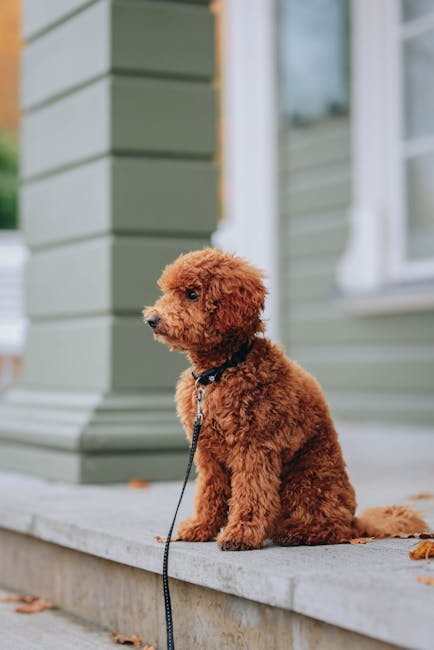Training your dog in basic obedience isn’t just about teaching commands—it’s about building a strong bond and making everyday life easier for both of you. Imagine having a dog that listens the first time you call, stays calm during visits, and walks nicely on a leash.
Sounds great, right? Whether you’re a new dog owner or just want to improve your furry friend’s behavior, this guide will show you simple, effective steps to train your dog with confidence. Keep reading, and discover how small changes can lead to big results in your dog’s obedience and your peace of mind.
Getting Started With Training
Training your dog in basic obedience is an exciting journey that can enhance your bond and communication with your furry friend. Getting started on this path requires a bit of preparation and understanding. It’s not just about teaching commands; it’s about establishing trust and respect. Are you ready to embark on this rewarding adventure?
Choosing The Right Environment
Selecting the right place for training can significantly impact your dog’s learning process. Start with a quiet, distraction-free area, like your living room or backyard. The goal is to keep your dog focused and comfortable. As they become more confident, you can introduce new environments to challenge them.
Gathering Essential Supplies
Having the right tools can make training sessions effective and enjoyable. Invest in treats that your dog loves, a sturdy leash, and a clicker if you choose to use clicker training. Consider a comfortable mat or blanket for your dog to sit or lie on during sessions. These items create a positive training atmosphere.
Setting Realistic Goals
Define clear, achievable goals for your dog’s training. Start with simple commands like sit, stay, and come. Understand that every dog learns at their own pace, and patience is key. Celebrate small victories to keep motivation high for both you and your dog. What’s the next milestone you want to reach together?
Teaching Basic Commands
Teaching your dog basic commands lays the foundation for good behavior. Simple commands help your dog understand what you expect. Training builds trust and makes daily life easier. Use clear words and consistent gestures. Reward your dog with treats or praise to encourage learning.
Sit And Stay
Start with the “Sit” command. Hold a treat close to your dog’s nose. Move your hand up, letting their head follow. Their bottom will naturally lower. As soon as they sit, say “Sit” and give the treat. Practice a few times daily.
Next, teach “Stay.” Ask your dog to sit. Show your open palm and say “Stay.” Take a step back. If your dog stays, reward immediately. Increase distance slowly. Keep sessions short and positive.
Come When Called
Choose a quiet place without distractions. Use a happy voice and say your dog’s name followed by “Come.” When your dog moves toward you, reward with praise or a treat. Repeat often. Never call your dog to punish. Make coming to you fun and safe.
Heel And Walk On Leash
Start indoors or in a quiet area. Hold the leash loose and keep your dog by your side. Say “Heel” and take a step forward. When your dog walks beside you, reward with a treat. Stop if your dog pulls. Wait for them to return to your side, then continue.
Practice short walks daily. Gradually add distractions like other people or dogs. Always use positive reinforcement to keep your dog focused.
Using Positive Reinforcement
Using positive reinforcement is one of the most effective ways to teach your dog basic obedience. It helps your dog understand which behaviors you want to see more often by rewarding them immediately. This approach builds trust and makes training a positive experience for both you and your dog.
Treats And Rewards
Treats are powerful motivators for dogs. Use small, tasty treats that your dog loves to reward good behavior right after it happens. This clear connection helps your dog learn faster.
Don’t limit rewards to just food. Toys, extra playtime, or a favorite game can also serve as great incentives. Mix up the rewards to keep your dog excited and engaged during training sessions.
Verbal Praise
Your voice is a strong tool in training. Use a happy, enthusiastic tone to say “Good job!” or “Yes!” right after your dog performs the desired behavior. This lets your dog know they did something right.
Try combining verbal praise with treats to double the impact. Dogs respond well to positive energy, so your tone can make a big difference in how quickly your dog learns.
Consistency And Timing
Timing is everything when using positive reinforcement. Reward your dog immediately after the behavior so they clearly connect the action with the reward. Even a few seconds delay can confuse them.
Be consistent with your cues and rewards every time your dog performs the behavior. This helps your dog understand what you expect and reduces mixed signals.
Ask yourself: Are you ready to be patient and consistent enough to see your dog’s progress? Training takes time, but with positive reinforcement, your efforts will pay off.

Credit: hsvb.org
Handling Common Challenges
Training a dog in basic obedience can be challenging. Dogs get distracted, act stubborn, or lose interest quickly. Handling these issues well helps build a strong bond. It also makes training smoother and more fun for both of you.
Dealing With Distractions
Distractions can stop your dog from focusing. Start training in a quiet place. Remove toys, sounds, or other pets. Use treats to keep your dog’s attention. Slowly add distractions as your dog improves. Praise your dog for staying focused. Be patient. Training takes time and practice.
Managing Stubborn Behavior
Some dogs may not listen right away. Stay calm and gentle. Avoid yelling or punishment. Use clear commands and consistent signals. Reward good behavior with treats or praise. Take breaks if your dog gets frustrated. Repeat training sessions daily for best results. Patience and kindness go a long way.
Keeping Training Sessions Short
Dogs have short attention spans. Keep training sessions brief, about 5 to 10 minutes. End each session on a positive note. Use fun games and rewards to keep interest high. Short sessions help your dog learn better. Train several times a day instead of one long session. This keeps your dog happy and eager to learn.
Building Long-term Habits
Building long-term habits in dog training ensures your pet learns good behavior that lasts. Consistency and patience create a strong foundation. Training should become part of daily life, not a one-time event. This approach helps your dog understand what is expected every day. Habits formed through regular repetition become natural for your dog. The goal is to make obedience a simple choice for your pet.
Regular Practice
Daily training sessions help your dog remember commands better. Short and frequent practices work best for attention spans. Use the same words and gestures each time. Praise your dog quickly when it follows commands. Keep sessions fun to keep your dog interested. Consistent practice builds trust and understanding.
Gradual Increase In Difficulty
Start with easy commands in quiet places. Slowly add distractions like noise or other people. Increase the time your dog must hold a command. This helps your dog learn self-control and focus. Avoid rushing to harder tasks before mastering basics. Progress at your dog’s pace for better results.
Socializing Your Dog
Expose your dog to different environments and animals. Socializing teaches your dog to stay calm and obedient outside. Practice commands during walks or visits to the park. Meeting new dogs and people improves confidence and behavior. Social skills support overall obedience and good manners.

Credit: k9connoisseur.com

Credit: www.kinship.com
Frequently Asked Questions
What Is The Best Age To Start Dog Obedience Training?
The best age to start training is between 8 to 12 weeks. Early training helps build good habits and social skills. Puppies learn quickly and adapt better to commands. Consistency and patience are key during this stage.
How Long Does Basic Obedience Training Take?
Basic obedience training usually takes 4 to 8 weeks. Training duration depends on the dog’s breed, age, and temperament. Short, frequent sessions yield better results. Consistent practice reinforces commands and improves behavior over time.
What Are Essential Commands For Basic Obedience?
Key commands include sit, stay, come, heel, and down. These commands ensure safety and control in various situations. Teaching these helps build a strong communication bond with your dog. Start with one command and gradually add others.
How Can I Keep My Dog Motivated During Training?
Use treats, praise, and toys as positive reinforcement. Keep training sessions short and fun to maintain interest. Avoid punishment, as it can cause fear and confusion. Rewarding good behavior encourages your dog to learn quickly.
Conclusion
Training your dog in basic obedience builds trust and good behavior. Start with simple commands and practice daily. Be patient and consistent; progress takes time. Reward your dog with praise or treats to encourage learning. Training strengthens your bond and makes life easier together.
Keep sessions short and fun to hold your dog’s attention. Remember, every dog learns at their own pace. Enjoy the process and watch your dog grow into a well-behaved companion.







